Wine did not have the importance in Asia that it always enjoyed in the Western world. It is true that the climate in most of Asia does not encourage wine production but there are some promising areas. China, Japan and India are developing an interest in wine and there are some domestic wine industries growing gradually.
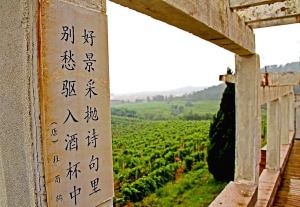 Asia’s climate is in the main not right for quality wine production. Vines have been grown in Asia for thousands of years, but most grapes have chiefly been eaten at the table, as fresh fruit, or have been dried, becoming an invaluable ingredient in the local cuisine.
Asia’s climate is in the main not right for quality wine production. Vines have been grown in Asia for thousands of years, but most grapes have chiefly been eaten at the table, as fresh fruit, or have been dried, becoming an invaluable ingredient in the local cuisine.
China, Japan and India are developing an interest in wine. There are some domestic wine industries gradually growing and becoming important. A number of areas show promise and with adequate investment and expert care could give the established countries in the Old and New world of wine a run for their wine production.
Though Grape seeds introduced in the 2nd century most vineyards still concentrate in table grapes or dried grapes.Wine industry is still very young, but careful investing would take it far as there is an ever growing interest in wine. The best grape growing areas would be found in the cooler coastal provinces of Shandong, Hebei, and Tianjin.
CHINA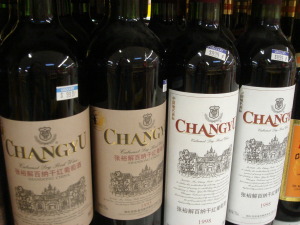
Huadong Winery in the Shandong province was the first to offer modern wines. It was founded by British merchants from European grape varieties such as Chardonnay, Riesling, and Cabernet Sauvignon.
The most promising states in the Shandong province are Chang Yu and Quingdao.
HuaXia winery in Changli, Hebei province, is another leading wine state. It is responsible for the Great Wall Red wine.
JAPAN
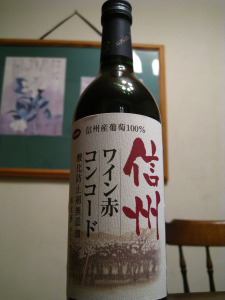 Vines have grown in Japan since the 7th century although mainly for the table. Only 10% of the annual crop of grapes will end up in a wine bottle. Japan’s monsoonal weather does not make for an easy grape growing.
Vines have grown in Japan since the 7th century although mainly for the table. Only 10% of the annual crop of grapes will end up in a wine bottle. Japan’s monsoonal weather does not make for an easy grape growing.
The wine regions of Yamanashi and Katsunuma must be incessantly vigilant about fungal diseases, the looming threat there, while the worry for estates in central Hokkaido are the low temperatures. Local producers often boost their output with imported grape concentrate.
Some European grapes –Cabernet Sauvignon in West Yamanashi and Chardonnay in Nagaro – are promising, as is Koshu wine, a local white. Other local grape varieties tend to make very light wines. Neo-Muscat and Ryugan are other white grapes grown for wine.
INDIA
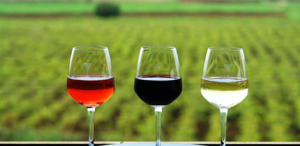 There are large ares in India dedicated to grape growing -the principal regions for the cultivation of grapes are the states of Maharashtra, Karnataka, and Andhra Pradesh- but 90% of the Indian harvest will end up as table grapes or raisins, though grapes have been known in India since 300 BC. Most of the the remaining 10% grapes used for winemaking will finish as part of the large volumes of ordinary wine produced in India. Nevertheless, there are several pioneer estates proving India is capable of making world class wines, despite adverse climate conditions.
There are large ares in India dedicated to grape growing -the principal regions for the cultivation of grapes are the states of Maharashtra, Karnataka, and Andhra Pradesh- but 90% of the Indian harvest will end up as table grapes or raisins, though grapes have been known in India since 300 BC. Most of the the remaining 10% grapes used for winemaking will finish as part of the large volumes of ordinary wine produced in India. Nevertheless, there are several pioneer estates proving India is capable of making world class wines, despite adverse climate conditions.
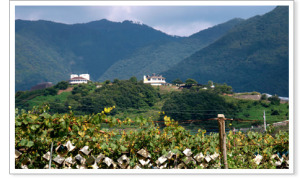 Château Indage in Maharastra is well known by sparkling wines like Omar Khayyam. They offer a newsletter and you can also inquire about their hotels.
Château Indage in Maharastra is well known by sparkling wines like Omar Khayyam. They offer a newsletter and you can also inquire about their hotels.
In the same region, Sula Vineyards use Chenin Blanc and Sauvignon Blanc grapes to make intense white wines. Chardonnay is the other white grape variety grown for white wine.
Grover Vineyards, near Bangalore, make a range of concentrated wines based in French grape varieties, like Cabernet Sauvignon. Pinot Noir and Merlot are also cultivated.
SOUTHEAST ASIA
Many of the grape vines in Thailand and other Southeast Asian countries are exposed to difficult conditions. Finding the right techniques to promote growth of grapes that will turn into premier wines is not easy, but there are plenty of eager explorers who are doing just that.
Helping to grow the industry are outside investors from France and Austra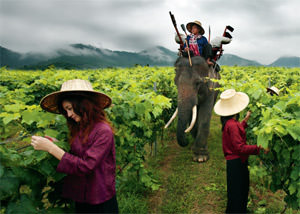 lia who see the potential of developing a regional wine industry where the warm, tropical climate brings both blessings and challenges.
lia who see the potential of developing a regional wine industry where the warm, tropical climate brings both blessings and challenges.
In Vietnam, several wine areas exist lead by the country’s premier winery, Vang Dalat, which specializes in wines made from local table grapes. In general, the local populace tends toward sweeter, less sophisticated wines which severely curtails opportunities for Vietnamese export to the world market.
In marked contrast, Thailand has been developing world class vintages made from traditional European Cabernet Savignon, Chenin blanc, and Shiraz grapes. Today, major Thailand wineries competing for attention include the Siam Winery – Hua Hin Vineyards and the Silverlake Winery in Pattaya along the southern coast, and another group of wineries situated around Khao Yai in south central Thailand.



 0
0